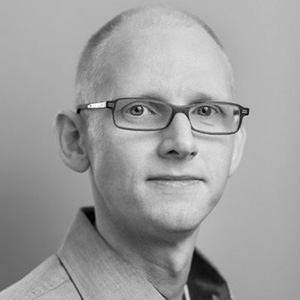Digital virtual lab

Ulrich Vogt, Professor at the Department of Applied Physics, who usually has physical labs in his course. During the pandemic he had to transition to digital labs. In this interview, he tells us about his experiences.
Practical laboratory skills is a learning goal in the course, isn't it? How do you as a teacher ensure that this learning objective is met if the students cannot be in a laboratory?
– There are many different practical skills we want our students to learn during labs. To work with the instruments, connect cables and perform the measurement is of course the most important skill, but there are others, like how to document the data in an organized way, how to deal with measurement uncertainties and how to present the results in written form or in a presentation. For the course I am responsible for, which is a pure lab course for first year physics students, we came to the conclusion that we will miss the first mentioned skill of actually doing the measurement with your own hands in a virtual lab. That is why we canceled our lab round during the spring when KTH was closed for students. Instead, we did a reduced version of the course with two labs on campus adapted to the corona situation during the autumn term. We planned also for a third lab just before Christmas, but due to the increased spreading of corona and after discussion with the students we decided to do the last course round as a digital virtual lab.
How did you organize the work concerning changing from physical labs to virtual / digital labs?
– I developed the course four years ago and I wanted that the students meet researchers and faculty members as lab assistants. So, there were always many teachers involved in the course, which was a big advantage since we could distribute the necessary development work on many shoulders. For the first two labs, we reduced the number of measurements somewhat and recorded some additional videos in order to better prepare students for the labs. Normally, students worked in groups of three for 3 hours, but now everybody worked alone for just one hour. Much less time, therefore good preparation material was very important. I recorded my videos in about two hours. The last digital virtual lab was done as a Zoom live event, where we teachers performed the measurements for maximum 12 students at a time, and the students were supposed to note the data we were giving to them. This worked quite well and was actually taking less time for us teachers than a normal lab round would take. Most time I actually spent to think about the course organization and how to adapt it to the ever changing corona situation.
Will you 100 percent go back to physical labs after the pandemic?
– Well, I think an experimental physics lab course should be a practical experience and of course we will go back to 100 percent physical labs after the pandemic. Giving the circumstances the digital live lab round worked very well and students were writing good reports (maybe because measurement data was excellent J). However, we noticed something interesting during the first two labs. In general, students were much better prepared for the labs, as everybody had to perform the measurements without the help of others. When students worked in groups before, there might be some that would “hide” behind others. This was not possible this time, so we think in total students were more active. This is something to think about, maybe combine labs where you work individually with labs you do together in a group.